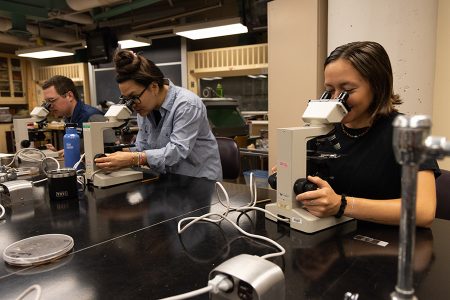A 2023 New York Times piece called “Who’s to Blame for a Million Deaths?” quotes Anthony Fauci reflecting on the long pandemic, “Something clearly went wrong … I don’t know exactly what it was.”
Figuring out how the U.S.’s response to the pandemic went wrong will occupy us for years to come. But in the meantime, coronaviruses are replicating and evolving and before we know it, the next pandemic could be upon us, and with a variant that is both highly transmissible and highly lethal.
The COVID-19 pandemic was the third time in just 20 years that a coronavirus had emerged to cause a public health crisis — the SARS-CoV and MERS-CoV outbreaks in 2003 and 2012, respectively, were harbingers of things to come. To prepare for the next pandemic, we need surefire protection, the kind we have for smallpox, polio, and measles. That means vaccines that will prevent infection and work across the globe in all kinds of conditions.
“In the first year that COVID vaccines were available it became clear they were good vaccines, but not great vaccines,” says SPH Regents Professor Michael Osterholm. “They could reduce serious illness, hospitalizations, and deaths, but they did not stop people from getting infected or transmitting the virus. Protection against serious illness was substantially reduced within six months of getting vaccinated, requiring ongoing use of boosters.”
Osterholm directs the Center for Infectious Disease Research and Policy (CIDRAP), a global leader in addressing emerging infectious diseases. As one of the world’s experts on infectious disease transmission, he was a national voice of reason and advice during the pandemic. Osterholm knows that creating broadly protective, long-lasting, and easily deployable coronavirus vaccines demands a highly coordinated global strategy.
Creating a plan that will guide efforts to research and develop coronavirus vaccines is an incredible endeavor.
Right People, Right Time
In early 2022, Osterholm rallied the CIDRAP team to launch what he calls a “vaccine roadmap Manhattan Project.” The team, led by CIDRAP medical director Dr. Kris Moore, has previously produced internationally recognized vaccine roadmaps.
Creating a plan that will guide global efforts to research and develop coronavirus vaccines is an incredible endeavor. In April 2022, the Rockefeller Foundation and the Bill and Melinda Gates Foundation announced that they were funding the project based on CIDRAP’s previous experience and reputation for creating vaccine roadmaps for influenza, Ebola, Nipah virus, and Lassa fever.
The CIDRAP team knew that advancing a global R&D vaccine initiative would require ongoing investment, communication, and coordination among researchers, governments, industry, multilateral and nongovernmental organizations, regulators, public health officials, and policymakers, so it engaged 50 of the world’s top experts on coronavirus vaccine development and worked around the clock. By October, the team had a draft document that it posted online for a month-long public comment period.
On February 21, 2023, the team launched the Coronavirus Vaccines R&D Roadmap (CVR).
An Essential Guide
Efforts were already underway around the world to develop broadly protective coronavirus vaccines, but until the CVR, there were no structures or milestones to coordinate the work, nor the leadership and investments essential for success. The CVR organizes existing research into five topic areas:
- Virology. Learning more about the global distribution of coronaviruses circulating in animal reservoirs that have the potential to spill over to humans.
- Vaccinology. Identifying preferred vaccine product characteristics and identifying the best methods to assess vaccine efficacy.
- Immunology. Learning more about the durability of immune protection from vaccines and natural infection, including mucosal immunity that may unlock new strategies to block infection.
- Animal and Human Infection Models for Vaccine Research. Discovering a range of suitable animal models to test vaccines and exploring the potential for the safe and effective use of controlled human infection models.
- Policy and Financing. Reinvigorating and sustaining a high level of political commitment and long-term investment in vaccine R&D and manufacturing.
The CVR has a six-year timeframe and the hope is that partnerships among NIH’s National Institute of Allergy and Infectious Diseases (NIAID), the global Coalition for Epidemic Preparedness Innovations (CEPI), and vaccine developers will drive much of the work, using the CVR as a framework.



